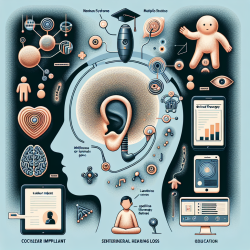In today's rapidly evolving educational landscape, collaborative problem-solving (CPS) is recognized as a crucial skill for the 21st century. Despite its importance, understanding the nuances of CPS, especially in online environments, remains a challenge. The research article "Pair interactions in online assessments of collaborative problem solving: case-based portraits" sheds light on how student pairs can effectively build shared understanding and acquire CPS practices during online assessments.
The Importance of Pair Interactions
The study highlights the significance of pair interactions in developing CPS skills. By focusing on micro-interaction processes at the pair level, the research provides valuable insights into how students collaborate to solve problems. The findings suggest that even when students achieve similar performance outcomes, variations in their interaction dynamics can significantly impact their collaborative efforts.
Key Findings
- Diverse Interaction Patterns: The study identifies different interaction patterns such as joint solution endeavors and individual solution endeavors. These patterns reveal how pairs approach problem-solving tasks differently.
- Task Type Influence: Symmetric and asymmetric task types stimulate different sets of interactions. Asymmetric tasks, which require students to rely on each other's resources, tend to foster more collaboration.
- Quality of Collaboration: The quality of interactions is crucial for successful CPS. Balanced dynamics where both students actively participate lead to better outcomes compared to unbalanced dynamics where one student dominates.
Practical Applications for Educators
The insights from this research can be instrumental for educators aiming to enhance CPS skills in their students. Here are some practical applications:
- Create Diverse Task Types: Incorporate both symmetric and asymmetric tasks in assessments to encourage varied interaction patterns and collaboration.
- Focus on Interaction Quality: Encourage balanced participation by designing activities that require equal input from all group members.
- Utilize Technology: Leverage computer-supported collaborative learning tools to facilitate effective communication and resource sharing among students.
The study's findings emphasize that fostering high-quality interactions is key to developing strong CPS skills. Educators should focus not only on task completion but also on the processes that lead to successful collaboration.
Pair interactions in online assessments of collaborative problem solving: case-based portraits
This research provides a foundation for further exploration into CPS practices. By understanding and implementing these insights, educators can better prepare students for the complex challenges of the future.










